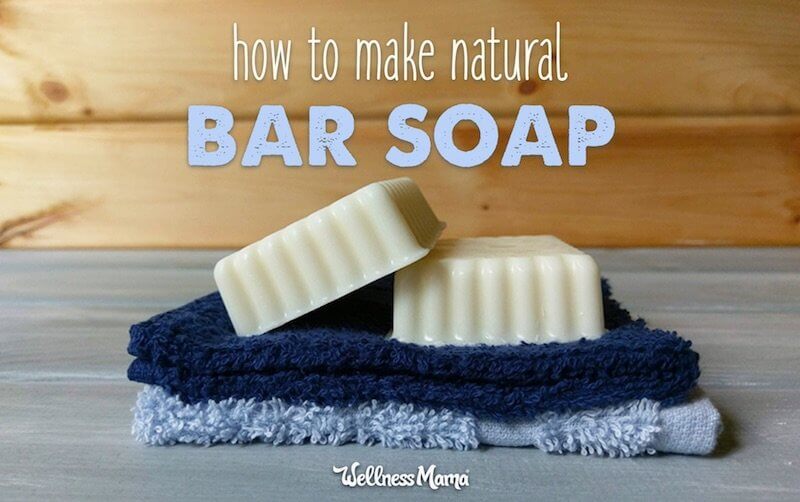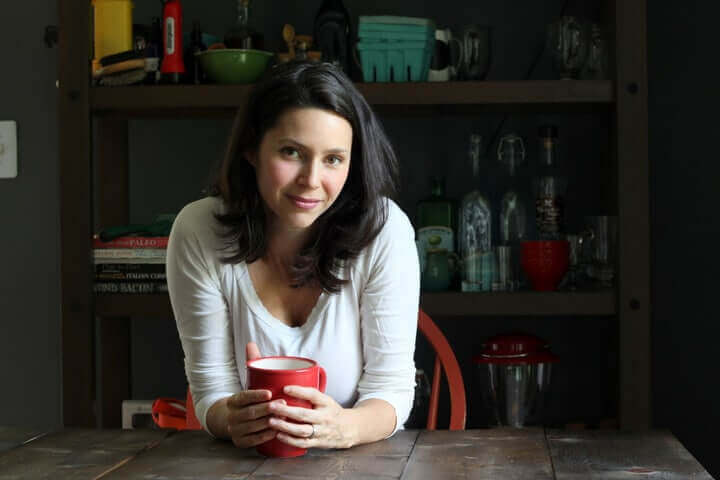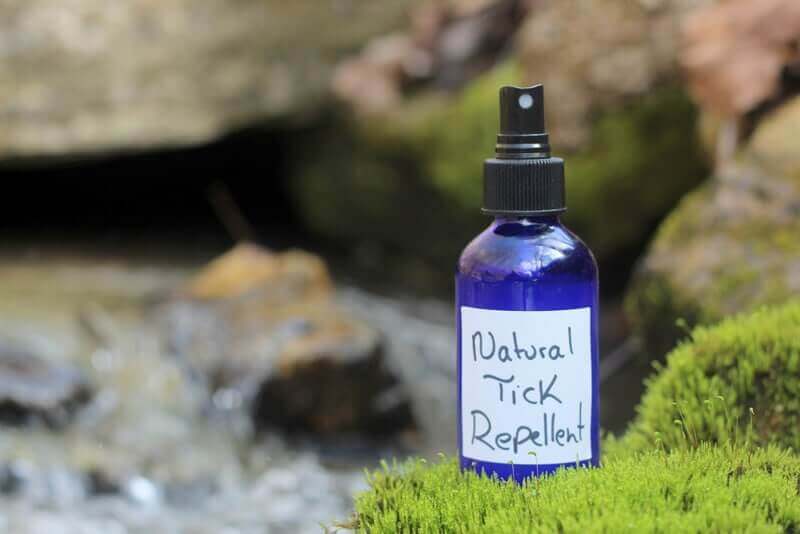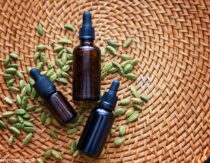
Baby spit up, diaper blowouts, and other stinky messes call for soap. Not just any soap though. My family loves this pure coconut oil soap and our homemade shampoo bars, but newborn skin calls for an extra gentle touch. This homemade baby soap is specially formulated delicate skin, but it’s also great for the whole family.
Superfatted Soap
This homemade baby soap is “superfatted” to give it an extra emollient feel. Lye is used in soap making to mix fats and water together. Because chunks of fat floating in water isn’t very helpful to get skin clean. Superfatting the soap just means that extra oils are added to further ensure there’s no lye left after the chemical reactions occur. The result is a creamy, moisturizing soap.
Baby Soap Ingredients
There are so many options when it comes to choosing oils to make soap with. Really almost anything goes as long as you run it through a soap calculator to make sure no lye remains in the finished soap. Certain carrier oils give more suds, while others are more moisturizing. In this recipe I’ve used a blend of coconut, jojoba, and olive oils to get the perfect soap for babies.
Coconut oil – This helps the soap to suds up nicely. Coconut oil can be too drying on its own if it makes up more than one third of the oil in soap, so I kept it at 10%.
Jojoba oil – This oil is technically a liquid wax and its very similar to our skin’s natural sebum (oil). Jojoba is gentle, anti-inflammatory, protects skin, and is rich in the antioxidant vitamin E.
Olive oil – Pure castile soap is made with 100% olive oil, so it’s a classic choice. When used alone though, olive oil soap takes much longer to cure. Olive oil is soothing, very moisturizing, and has skin protecting antioxidants, making it perfect for baby’s delicate skin.
Setting up the Soap Making Space
If you’ve never made soap before, don’t panic. I promise it’s easier than it looks! Here are guidelines for safe soap making.
- Make sure kids and pets aren’t underfoot.
- Choose a well ventilated area (I prefer outside).
- Wear long pants and long sleeves to protect skin.
- Rubber gloves and safety goggles are also a must.
- Keep vinegar on hand.
Lye is highly alkaline, so it can burn skin. I keep a jug of vinegar nearby, since the acid helps neutralize the high alkaline nature of the lye in case of a spill. If you’re still a little freaked out with using lye, you can read more about lye safety here. No lye remains in the finished soap, and it’s superfatted to make extra sure there’s no traces of lye.
Homemade Herbal Baby Soap
Equipment needed
- accurate kitchen scale
- stainless steel or enamel pot
- glass or plastic pitcher for mixing and pouring the lye
- containers for holding oil while it’s being weighed – I use disposable plastic cups
- 2 large plastic or wooden spoons – one for stirring the lye and one for the oils
- a stick blender
- 2 thermometers – one for the lye and one for the oil
- soap mold – this can be as simple as a shoe box lined with plastic, glass bread pans, or pretty molds like these
- safety glasses, gloves and clothing that covers bare skin.
- cardboard to fit over the molds
- a heavy towel or a blanket (to insulate the cooling soap)
- vinegar (to dab on skin in case the lye splashes)
Ingredients
Weigh the following ingredients on the scale. Please note that these are NOT liquid measurements:
- 3 oz coconut oil
- 1 oz jojoba oil
- 25 oz olive oil
- 3.72 oz lye
- 10 oz distilled water
- .5 oz of either chamomile or lavender essential oil, or .25 oz of each (can use other baby safe essential oils if preferred. Just keep the total amounts to no more than .5 ounce)
- Fill a sink with several inches of cold water and ice for a water bath to cool the lye mixture.
- Wearing the rubber gloves, pour the 10 oz of distilled water into the pitcher and very slowly stir in the lye until dissolved. Never pour water into lye, always lye into water!! The fumes are toxic, so I suggest doing this outdoors. The temperature will rise very quickly to 220°F or so.
- Place the pitcher into the cold water bath in the sink and use a thermometer to test the temperature. The goal is to get it to 100°F.
- Put the oils (except the essential oils) into the pot and heat on low until the temperature reaches 100°F. This will happen quickly.
- Both the lye and the oil need to be 100°F (and within 10 degrees of each other) at the same time. Use the ice water bath to help lower the temperatures as needed.
- When both the lye and the oils are at 100°F, pour the lye mixture very slowly into the oil mixture. Use a stick blender until the mixture reaches trace. Be sure the stick blender is completely under the soap surface before turning it on! The mixture should look like cake batter when you’re done
- Next, add in the essential oils and pulse a few times with the stick blender to combine. This should look like thick pudding, but still be pourable when it’s done.
- Pour the soap into the prepared molds. Cover with the piece of cardboard and then wrap in a towel or blanket so the soap cools slowly. The towel can be removed after the first day, but the soap will take several days to harden since it’s superfatted .
- Once the soap feels solid, it can be unmolded, cut into bars (if a loaf mold was used) and set out to harden. After the soap has cured for 6 weeks it’s ready to use.
What is Trace?
Soap has reached trace when mixing causes lines in the soap batter that stay in place or when a drizzle of the soap mixture retains its shape on the soap’s surface. There will be no streaks of oil left in the soap, as everything is mixed well together. I use a stick blender that I’ve dedicated to skincare recipes, but technically you could just clean it really well.
- Light trace – resembles cake batter
- Medium trace – resembles thick cake batter or thin pudding
- Thick trace – Thick pudding consistency
Baby Safe Essential Oils for the Soap
Adding relaxing scents to homemade baby soap, like rose, lavender and chamomile soothe skin and calm the senses. I’m not a fan of artificial (and harmful) scents, especially in my kid’s skincare, so this recipe uses natural herbs and essential oils. These not only add a pleasant fragrance to the soap, but skin nourishing benefits as well.
Since this soap is meant for babies, it’s important to choose essential oils that aren’t harsh or dangerous for little ones. Certain essential oils like eucalyptus, peppermint, or hot oils like cinnamon bark should never be used on babies.
The following essential oils are considered generally safe to use on babies over 3 months when properly diluted.
- Lavender
- Lavandin
- Juniper
- Rose
- Frankincense
- Wild or sweet orange
- Blood orange
- Bergamot
- Cedarwood
- Chamomile
- Cypress
- Fir needle
- Geranium
- Pink grapefruit
- Mandarin
- Neroli
- Patchouli
- Tea tree
- Spruce
- Lemon
- Vetiver
- Vanilla
- Lime
Note about Citrus Oils
Most citrus oils can cause photosensitivity (meaning exposed skin is more likely to be damaged by the sun for a period after using them). However, when used under a certain percentage and in a wash off product (like soap), photosensitivity isn’t a concern.
Using Herbs in Baby Soap
Sometimes I like to add herbs to soap to give a scent boost and add exfoliating properties. Baby’s skin is delicate, so they don’t really need to exfoliate. However, herbal infused oils can be used in a homemade baby soap for their skin benefits.
Lavender, calendula, and rose are some of my favorites to use in skincare, and are gentle and nourishing for baby’s skin.
FREE Ebook: DIY Body Care Gifts Made Simple
Do you want to give gorgeous, handcrafted gifts for family and friends, without spending a bunch of time on them?
Then I’d love to give you a free copy of DIY Body Care Gifts Made Simple – my step-by-step guide to making gorgeous handcrafted gifts without stressing yourself out – as a gift for signing up for my newsletter. I’ll show you how to make vintage labels, luxurious lotion bars, lip balms, sugar scrubs, body sprays and more like a pro. Sign up for my newsletter and you’ll be redirected to the download page immediately!




